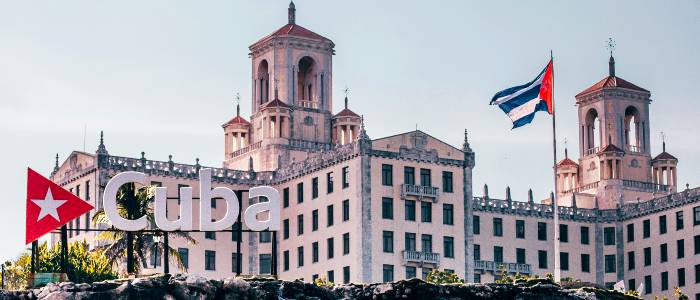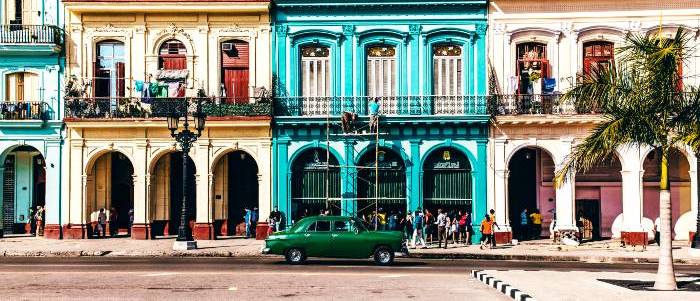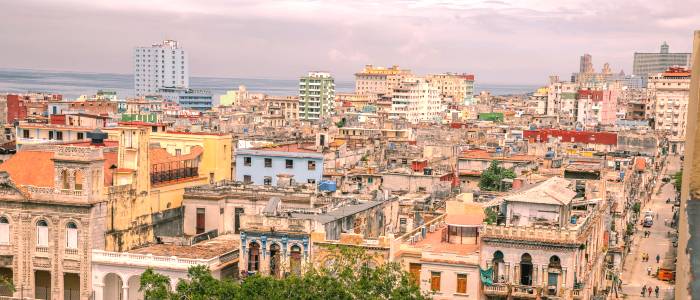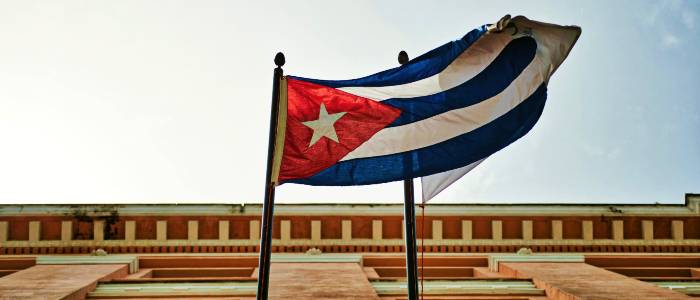
Contents
▼
Contents
▼Staying connected in Cuba is a little more complicated than in other destinations. Internet access in Cuba has improved significantly over the years, but there are still some challenges and limitations that you should prepare for.
This guide will help you understand what to expect and how to best access the internet during your visit to Cuba. It covers everything from NAUTA cards to practical tips for staying online while you travel.
Can I Get Internet in Cuba?
Yes, you can access the internet in Cuba, but it's not as straightforward as in many other countries. Cuba’s internet infrastructure is controlled by the government, and while access has been expanding, it remains limited.
Most connectivity is available through public Wi-Fi hotspots in parks, plazas, and other public areas. You can also access the internet in hotels and state-run cyber cafes.
You'll need to purchase a prepaid card to access these networks. These are available at various retail locations and sometimes directly from the venue offering the access.
Who Provides Wi-Fi in Cuba?
The primary provider of internet services in Cuba is ETECSA (Empresa de Telecomunicaciones de Cuba S.A.), a state-owned enterprise.
ETECSA operates the public Wi-Fi hotspots and also sells the internet access cards required to log in to these networks.
You can find a complete list of public Wi-Fi hotspots and internet access points on the official ETECSA website. It’s a good idea to download or copy this list to your device before arriving in Cuba so you have it handy and can more easily navigate to the nearest spot.
You can also ask locals for ‘Wi-Fi’ (pronounced ‘wee-fee’ in Spanish). They’ll direct you to the nearest internet access location.
In recent years, ETECSA has also started offering mobile data services to tourists through temporary SIM cards. These are a convenient option if you need more mobility (see the SIM card section below for more details).
Cuba Internet Card When You Travel
When traveling around Cuba, the most common way to connect to the internet is by using a prepaid internet card from ETECSA. This is called a NAUTA card.
NAUTA cards offer access for a limited amount of time, typically for 1 hour or 5 hours, and can be used at any public Wi-Fi hotspot. The cards are widely available throughout major cities and can often be purchased from hotel front desks.
Be prepared for the possibility of queues when buying the cards at official ETECSA outlets, especially in high-demand areas. The cards typically cost 24 CUP per hour (around US $1.20).
Another option to buy an NAUTA card is to head directly to a Wi-Fi hotspot area, such as the Parque Central in Havana. It's common to find people reselling NAUTA Internet cards at a markup, charging an additional US $1-3 per hour.
These cards are safe to use and can help you avoid long queues. However, always make sure that the password on the card is intact and has not been previously scratched off.
Using a NAUTA card
To use a NAUTA card, follow these steps:
- Activate the Wi-Fi on your phone and connect to the ETECSA network.
- A login screen will usually appear.
- You need to enter the username (usuario) and password (contraseña) that are listed on the back of your scratch-off internet card.
If the login screen does not automatically appear, open your browser and enter “1.1.1.1” into the address bar.
If you still have connectivity issues, try disconnecting from the network, selecting “forget this network”, turning off your Wi-Fi, and then turning it back on to reconnect. If that does not work, restart your phone and attempt the steps once more.

Buying a SIM Card in Cuba
While purchasing a SIM card in Cuba is an option, it can be a complex and lengthy process. It’s not recommended unless you plan to stay in Cuba for several weeks and require consistent internet access.
If you do wish to buy a SIM card, you’ll need to go to an ETESCA office with your passport and an unlocked phone. You should expect to pay around 750 CUP (US $30).
You then need to wait around 36-72 hours for the SIM to be activated.
Alternatively, ETECSA has started offering a new SIM card for tourists, called the Cubacel Tur Card. However, you need to order it in advance and pick it up at the airport once you arrive in Cuba.
An advantage of this card is that you can activate it immediately, but it’s more expensive and has more restrictions. You can expect to pay around US $25 for 20 minutes of calls, 2.5 MB of data, and 20 SMS messages.
Cuba Internet Access in Hotels
It's common for hotels in Cuba to offer guests free Wi-Fi in common areas for around 30 minutes to an hour each day. This is typically provided through the same NAUTA cards used at public Wi-Fi hotspots.
If you need more time online, you can purchase additional Wi-Fi time at the hotel reception. Be aware that these cards can cost often 3 to 4 times the price charged by ETECSA.
Some higher-end hotels in Havana and other major tourist destinations offer longer free Wi-Fi sessions to guests, with up to 12 hours of access in some 4 and 5-star hotels.
However, it's best to check the hotel’s internet policies and fees before booking if staying connected is important for you during your trip.
Internet Restrictions in Cuba
Internet censorship in Cuba mainly targets political content that is critical of the government and is unlikely to impact the average tourist directly.
However, due to the U.S. trade embargo, there are significant restrictions on financial transactions and the availability of certain websites and apps.
Financial services such as PayPal, Venmo, Wise and Revolut, and even direct access to U.S. bank accounts are blocked. This means that sending or receiving money through these apps, checking bank balances, or making transfers is not possible from within Cuba.
Additionally, services like YouTube, Netflix, Pandora, and Amazon are also inaccessible, although these might not be essential for short stays.
To navigate around these restrictions, one effective solution is to use a Virtual Private Network (VPN). A VPN masks your location, allowing you to access the internet as if you were in your home country, thereby bypassing blocks on financial services and entertainment websites.
Furthermore, while popular social media apps like Facebook are available, their functionality may be reduced, and downloading new apps can be challenging. It's advisable to download and set up any necessary apps and a reliable VPN before arriving in Cuba.
Tips for Using the Internet in Cuba
Here are some practical tips to help you stay connected smoothly during your trip:
Pre-download essential apps
Make sure you download and set up these apps before you arrive in Cuba:
- WhatsApp for text, voice messages, calls, and video chats.
- Google Translate for translating Spanish words and phrases, including offline access and a camera function for real-time translation of texts and signs.
- Maps.Me and Google Maps for offline use to navigate without needing a data connection.
Access internet wisely
WiFi strength varies and is shared with many users. For a stronger connection:
- Connect early in the morning when fewer people are online.
- Use less crowded Wi-Fi hotspots for potentially better service.
- Avoid the internet during peak times like weekend afternoons.
Manage your internet card efficiently
If you’re using a NAUTA card to access the internet, use the following tips to make sure you avoid using up all of your allowance:
- Write emails offline and send them when connected.
- Record WhatsApp voice messages offline and send them upon logging in.
- Draft social media posts in your Notes app and copy them over once you're online.
- Use photo editing apps that do not require an internet connection.
Additionally, make sure you log out or disconnect from Wi-Fi when you’re not using it to save your internet card minutes. You have the option to either press the "cerrar sesión" (“close session”) button located beneath the NAUTA timer, or you can simply switch off your Wi-Fi connection.


